Saturday 6th February: São Antão

Awelina of Sweden
James Collier
Sat 6 Feb 2016 18:15
|
Awake before light to catch the 8am ferry from Mindelo to Porto Novo on the
adjacent island of São Antão. It takes an hour to cross the quite rough stretch
of sae between the islands, and the ferry was quite crowded.
 Marina from the ferry, Awelina second from the left.
On queuing to get off the ferry James got in conversation with a man who
drives not an aluguer but a ‘yazz’ which is the creole word for a minibus (like
‘Biro’ instead of ball-point, minibuses are all Toyota Hiace) and a deal was
done for an island tour before even getting ashore.
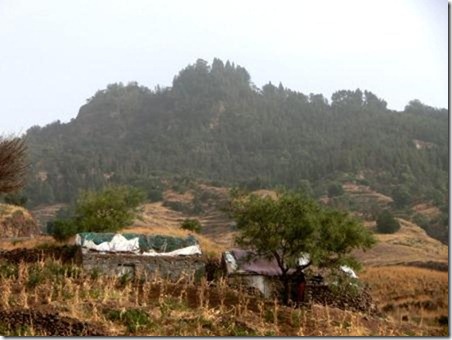 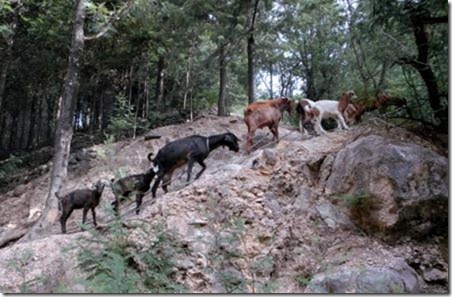 As we drove up from sea level the scenery and vegetation changed first to
agricultural land, mostly maize, and then to pine forest in which goats
graze.
Then at the top one peers over to an incredible sight: one realises that
one’s on the edge of a caldera, and miles below the valley floor is green and
intensively cultivated: every square inch as far as one can see.
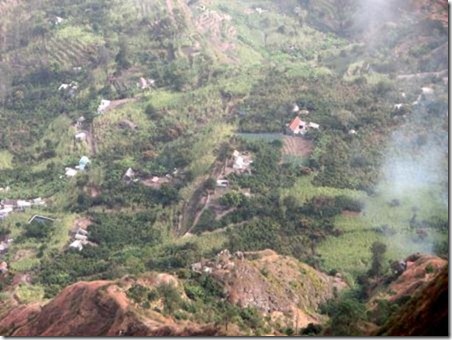 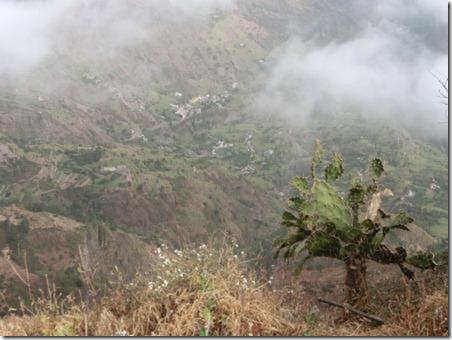 Views down to the valley floor
 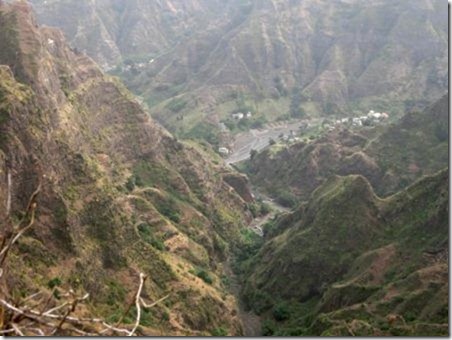 Maize and sugar cane fields on a drier and higher mini-caldera. And the
terraces continue up near vertical slopes.
We then drove round the rim until we could cut down into the bottom, coming
out near the sea at Ribeira Grande, and drove along the coast to Ponta do Sol
(cobbled road) and then on to Fontanhas (dire road clinging to the edge of a
precipice).
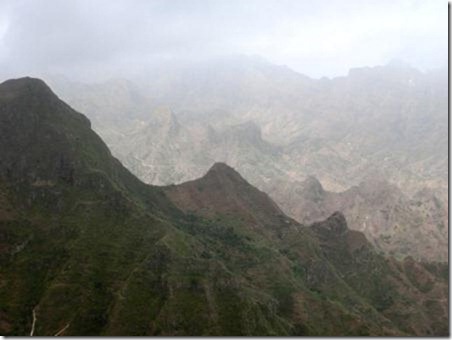 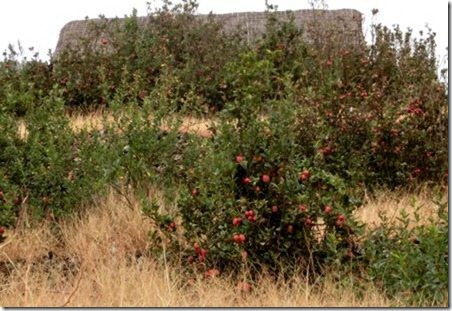 Down from the caldeira rim one passes farms growing all manner of crops,
including apples: just getting ripe in February! We bought a kilo or so.
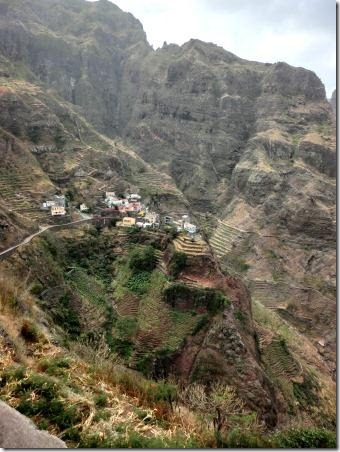 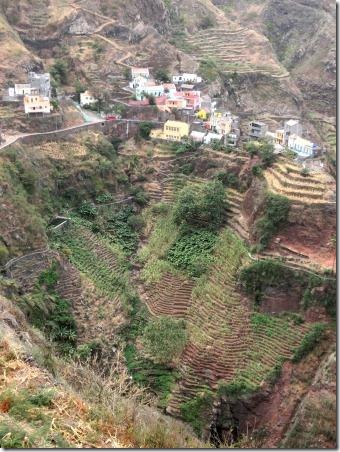 Views from the road between Porto do Sol and Fontanhas. It really is more
than 45 degrees, almost vertical, where there is cultivation of potatoes, maize,
salad crops and sugar cane.
We then walked back from the Fontanhas road into the fishing village of
Porto do Sol where we had lunch – delicious grilled fish again of course.
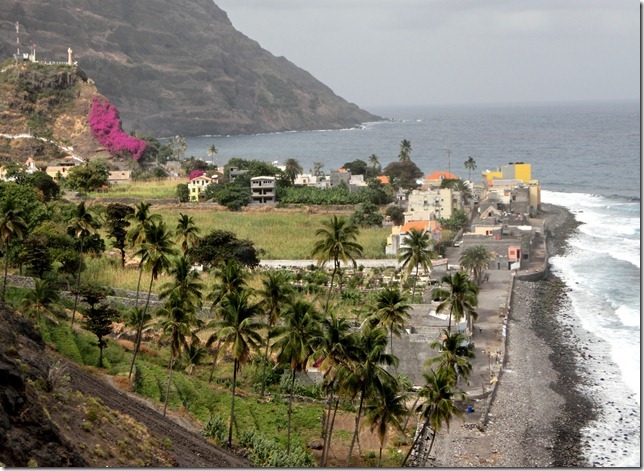 After that our driver took us to his own town of Cidade das Pombas, also
known as Paul.
 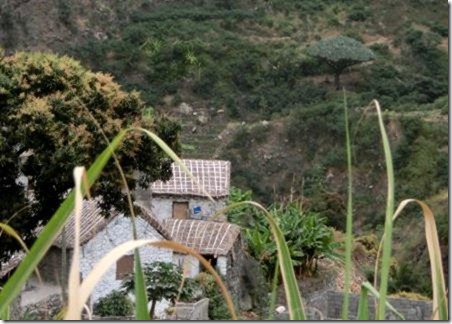 Apart from its attractions, especially up the road inland where there are
traditional Cape Verdean houses amongst mangoes, bananas, papayas and sugar
cane, there is the destination of much of that cane – a distillery.
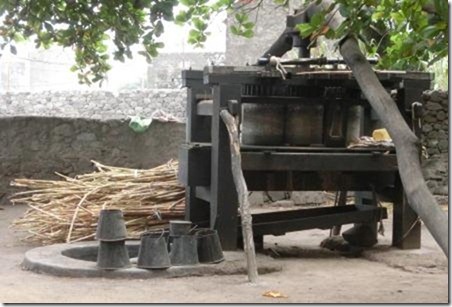 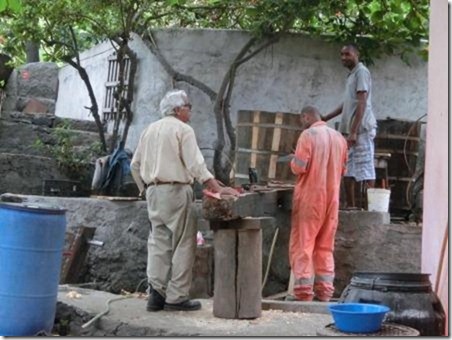 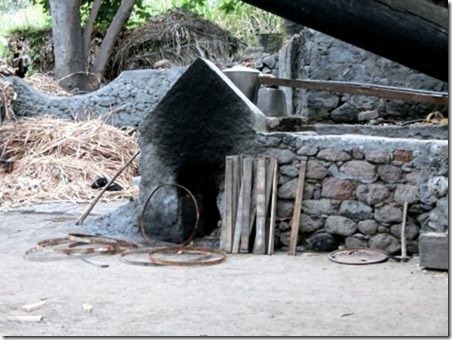 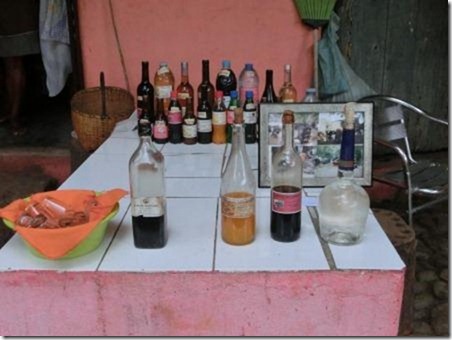 The cane is crushed in a press driven by oxen – stabled just alongside so
we could admire them – and then allowed to ferment in barrels: coopering was
going on while we were there with the silver-haired patron supervising. After
fermentation it goes in the still which burns old barrels and dried sugar cane
stalks. A stream has ben diverted to provide a trickle of water in the trough
through which the pipe from the top of the still runs. The product is called
‘Grogue’, a name given it by English sailors and which has stuck.
Not an instrument to be seen but the result – we bought a litre bottle
(which is sold in the clear Evian bottles as in the photo) - while
claiming to be 42% proof catches fire without pre-heating and we reckon is more
like 60%. Methanol content unknown but unlikely to be zero. It also comes
in a diluted version called ‘Ponche’, the dilutant being called ‘Miel’, ie
honey, but actually is almost certainly molasses. An alternative but no less
lethal version uses mango juice.
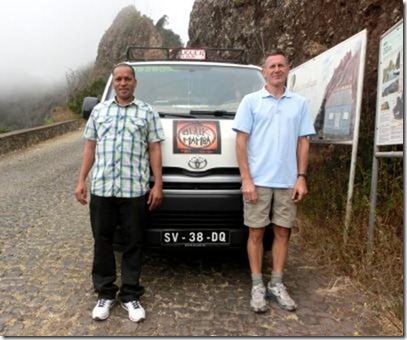 Ramos our driver in front of his smart Hiace, posing with an ugly white
bloke.
|